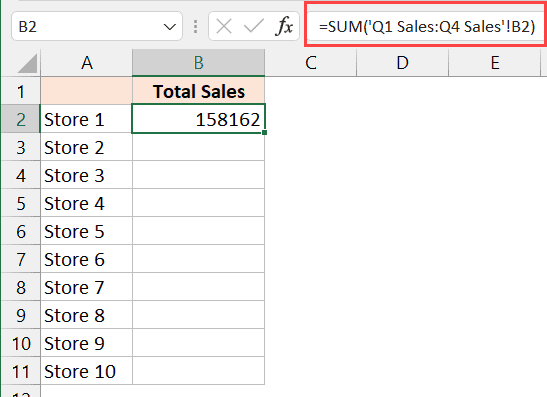3 Ways to Sum Numbers Across Excel Sheets

Excel is an indispensable tool for anyone dealing with numbers, data analysis, or financial management. One of its powerful capabilities is the ability to sum numbers not just within a single sheet, but across multiple sheets. This functionality is crucial for tasks like consolidating data from various departments, different time periods, or various sections of a project. Here, we will explore three effective ways to sum numbers across Excel sheets, ensuring you can aggregate data with ease and precision.
Method 1: Using 3D References

Excel's 3D reference feature allows you to sum ranges over several sheets with just one formula. Here's how you can do it:
- Identify the sheets where the data resides. Let's say you want to sum numbers in cell A1 from Sheet1 to Sheet12.
- Click on the cell where you want the sum to appear.
- Enter the formula:
=SUM(Sheet1:Sheet12!A1) - Hit Enter. Your total will appear, pulling values from A1 across all specified sheets.
🔎 Note: 3D references work when the sheets you reference are named in sequential order, e.g., Sheet1, Sheet2, etc. If they aren't, you'll need to use a different method.
Method 2: Creating a Summary Sheet with Cell References

If your data sheets are not named sequentially or if you need more flexibility, setting up a summary sheet can be highly beneficial:
- Create a new sheet or designate an existing sheet as your "Summary" sheet.
- On this sheet, list the names of the sheets from which you want to sum data.
- Next to each sheet name, write a formula to reference the cells in those sheets. For instance, in cell A1 of your summary sheet, enter
=Sheet1!A1, and then repeat this process for other cells as needed. - Use the SUM function to add these cell references together. For example, if you listed three sheets in cells A1 to A3, you would use
=SUM(A1:A3)in another cell to sum up all values.
⚠️ Note: This method requires you to update the references manually if the data locations change in the source sheets.
Method 3: Using Excel Functions with INDIRECT

The INDIRECT function in Excel can dynamically pull data from different sheets, making it perfect for flexible data aggregation:
- Create a list of sheet names in one column, for example, in Column A starting from A1.
- Beside this list, in Column B, enter the formula:
=INDIRECT(A1&"!A1"). This formula will pull the value from cell A1 of the sheet named in A1. - Drag the formula down to cover all sheets you've listed.
- Sum the values in Column B with the formula
=SUM(B1:B12)assuming you have 12 sheets.
| Sheet Name | Value from A1 |
|---|---|
| Sheet1 | =INDIRECT(A1&"!A1") |
| Sheet2 | =INDIRECT(A2&"!A1") |
| ... | ... |
| Total | =SUM(B1:B12) |

🌟 Note: INDIRECT is a volatile function, meaning it recalculates every time something changes in your workbook, which can slow down large Excel files.
In summation, summing numbers across Excel sheets offers a variety of methods tailored to different scenarios. Whether you prefer the simplicity of 3D references, the flexibility of a summary sheet, or the dynamic capabilities of the INDIRECT function, Excel provides tools to match your needs. By understanding these methods, you can streamline your workflow, reduce errors, and make data consolidation a breeze. Remember that each approach has its advantages, and choosing the right one depends on your specific dataset, the naming structure of your sheets, and how often the data might change.
Can I use 3D references if my sheets are not named sequentially?

+
No, 3D references require sheets to be named in a sequential order. For non-sequential sheets, consider using the INDIRECT function or creating a summary sheet.
Is there a performance impact when using INDIRECT?

+
Yes, INDIRECT is a volatile function, which means it recalculates often and could impact workbook performance if used extensively in large Excel files.
How do I know which method to use for my specific needs?

+
Choose 3D references for simplicity and when sheets are named sequentially. Use a summary sheet for more control over what data to sum or when sheets aren’t named sequentially. Opt for INDIRECT when you need to reference data dynamically.



